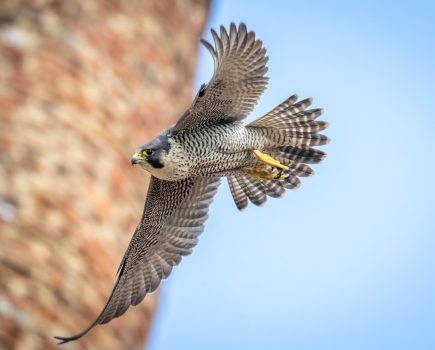MAY 07, 2013: Advice from Joanna Palmer, nutritionist for the Smallholder Range
Advice from Joanna Palmer, nutritionist for the Smallholder RangeFor many smallholders, starting out in farming begins with a flock of chickens and the enjoyment this brings can soon lead to a quest for new challenges. Where time and space allow, rearing pigs is often the next natural step and with plenty of research and careful planning, it can be an extremely successful and rewarding venture. It is important to be aware of the many laws and regulations involved in not just keeping pigs, but also in moving them. These laws have been put in place to control and prevent the spread of diseases and also to provide traceability and identification throughout the food chain. Laws differ between countries in the UK however, up to date information can be found on each government’s website. Rearing a couple of weaners to produce meat for yourselves and a few friends is an ideal introduction to pig keeping. Six to nine months is normally sufficient time to take weaners to slaughter weight, giving you a taste of small-scale pig farming, without the commitment that is required when dealing with breeding stock. Breed choice is important, with many smalholders opting for more traditional breeds like the Gloucester Old Spot and Saddleback. Not only are these breeds hardier and better suited to outdoor rearing than modern commercial hybrids, but their meat is often said to be much tastier. It is always advisable to purchase weaners from a reputable breeder, many of whom will also be more than willing to provide invaluable support and guidance to keen novices. Pigs are intelligent, social creatures who need company of their own kind to thrive. To give them the best quality of life they need room to play and forage for food, half an acre of well drained land is sufficient for two pigs but the more space you can give them the better. All housing, fencing and equipment needs to be in good working order as pigs are powerful animals and can very quickly destroy anything that is not quite up to the job! Electric fencing is favoured by many pig keepers as the most efficient way of deterring serial escape artists. A purpose built pig ark with a straw bed is the simplest form of housing to use, and should be positioned in the driest area of the pen, bearing in mind that a combination of rain, trotters and destructive snouts will very quickly turn even the best drained soil into something resembling muddy waste land! Adding extra interest to the pen such as tree trunks or other suitable obstacles to keep the pigs amused can help to prevent boredom. A mud wallow area is also vital to help protect pigs from the sun and to aid body temperature control as they do not have the ability to sweat. Feeding pigs is simple, a good quality complete feed such as Smallholder Range Rare Breed Weaner/Finisher Pencils will provide a balanced diet and promote a natural growth rate from weaning to slaughter. A constant supply of clean, fresh water in a sturdy trough is essential. Additional fruit and vegetables can be fed to add interest to the diet but it is important to remember that it is illegal to feed waste kitchen food and meat products to any livestock. Knowing how your pigs normally look and behave and familiarising yourself with the most common pig ailments and diseases will help you to know when to seek professional help. A little early groundwork will go a long way to ensure that your introduction to pig keeping is as stress-free as possible. For more information on feeding pigs, call the Smallholder Range nutritional helpline on 01362 822 902 or visit www.smallholderfeed.co.uk







